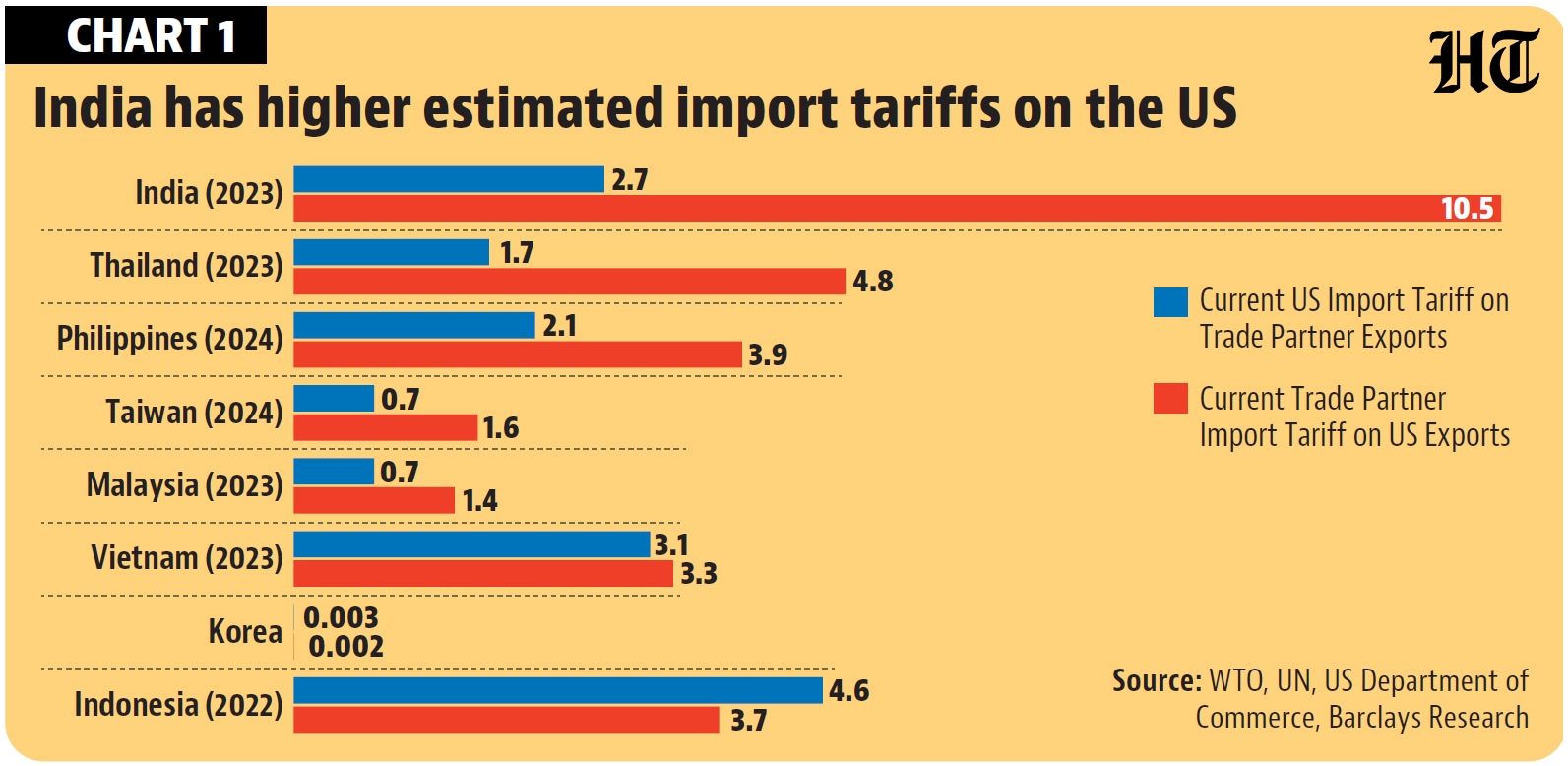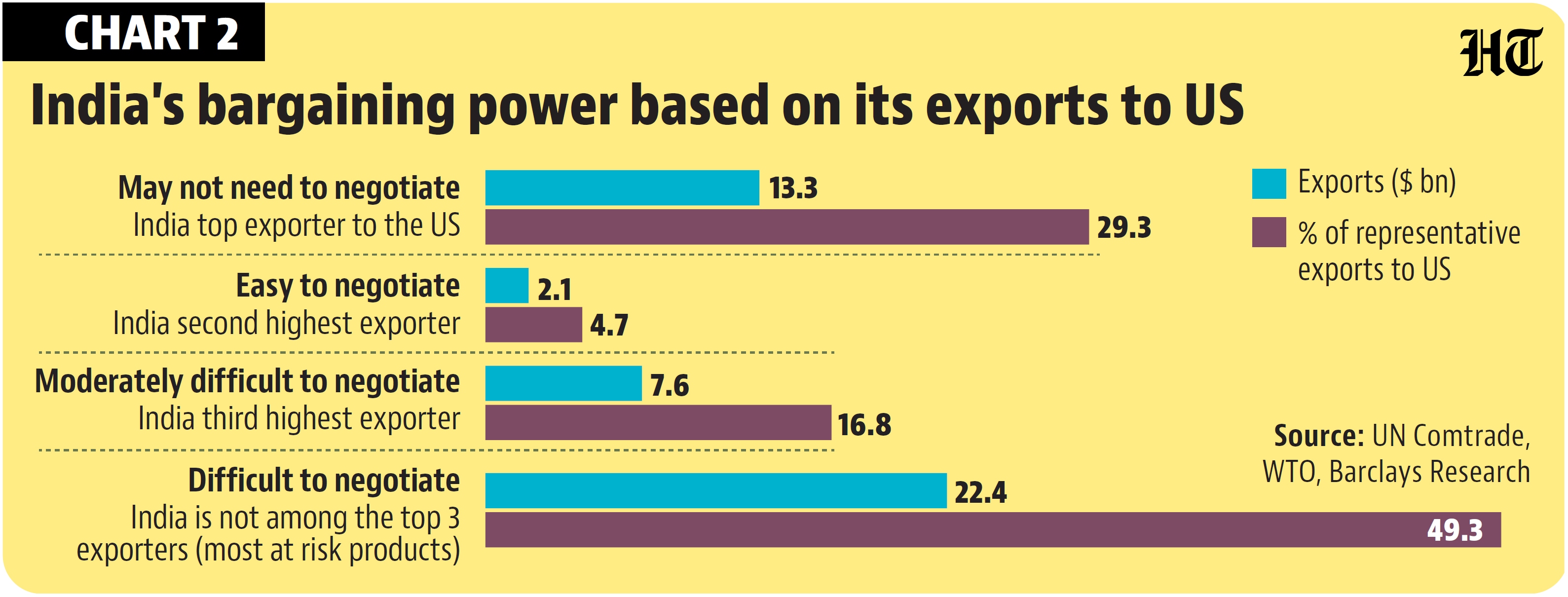Mar 29, 2025 03:10 AM IST
A report by Barclays Chief India Economist Aastha Gudwani analysed Indo-US trade and suggests that India might take a cluster-wise approach to the negotiations
NEW DELHI: With days left before US President Donald Trump announces reciprocal tariffs on April 2, Indo-US trade negotiations continue to take place. Will India drastically bring down its tariffs to address Donald Trump’s criticism of Indian tariffs being too high? Will the reductions be across the board or commodity specific? A report released by Barclays Chief India Economist Aastha Gudwani has analysed Indo-US trade in detail and suggests that India might take a cluster-wise approach to the negotiations.
US’s trade deficit with India has increased significantly, but it is still relatively small compared to others
Data from US Bureau of Economic Analysis (BES) shows that US’s trade deficit with India was rising consistently between 1999 and early 2010s after which it has stabilised. India’s share in US’s total goods and services trade deficit increased from less than 2% in the 2000s to reach a peak of more than 6% in the early 2010s but has stabilised at around 5% in the 2020s. To be sure, India is still a small player as far as US’s overall trade deficit in concerned. US’s trade deficit of $ 46.1 billion with India was just 5.02% of its overall trade deficit in 2024.

But India imposes one of the highest tariffs on US imports despite facing lower tariffs in the US
The Barclays report shows that compared to other countries in South East Asia, India imposes much higher tariffs on products imported from the US. Not only that, India’s tariffs on US imports is also much higher than tariffs that the US imposes on Indian exports. This difference is much lower for Thailand, Philippines, Taiwan, Vietnam and other countries.

However, the Indo-US tariff difference is not the same across goods
This is the most important analysis in the Barclays report. It has looked at the difference between tariffs imposed by India and US on specific goods according to their importance in India’s export basket to the US. The difference is significant (ten percentage points) for some of India’s most important exports to the US such as pharma products ($6.5 billion) and gems and jewellery ($5.9 billion), very high for exports of relatively lower importance and not so significant for some commodities such as petroleum products.
The report uses this data along with India’s bargaining strength – a function of whether or not India is a big supplier of these products – to classify India’s exports into four categories from India not needing to negotiate from the US to finding it difficult to negotiate. For products in which India is the top exporter to the US, India may not need to negotiate at all and could have the highest bargaining power. Products in the ‘relatively easy to negotiate’ category are those for which India is the second largest exporter, where India still has relatively high bargaining power. Products for which India is the third largest exporter are moderately difficult to negotiate and India could have low bargaining power. The final category is one where India will find it ‘difficult to negotiate’ where India is not among the top three suppliers for the US. These are the products which are at most risk of facing reciprocal tariffs, as per the report.




